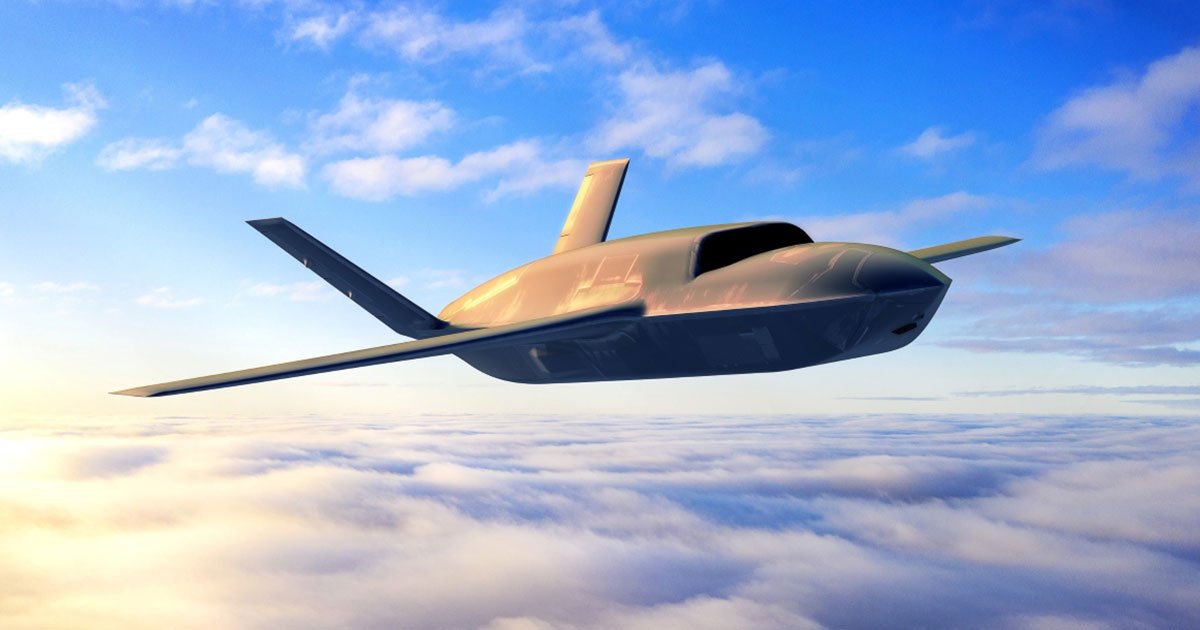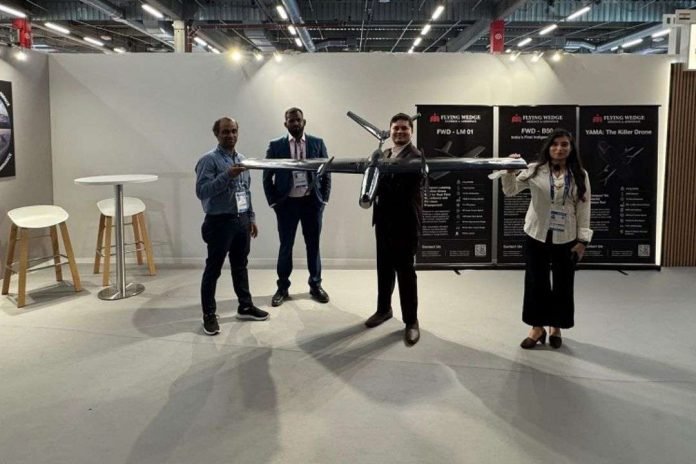The Paris Air Show (PAS-25), the biggest aerospace and defence gathering in the world, featured a record number of drones, reflecting their rising importance after proving highly effective in the Ukraine war and as the US prepares for a potential conflict with China in the Pacific.
In April last year, the US Air Force selected Anduril and General Atomics to develop the first fleet of drone wingmen, which are designed to fly alongside manned fighter jets and are officially known as Collaborative Combat Aircraft (CCA).
At the PAS-25, General Atomics showed off a model of its YFQ-42A drone, which is its equivalent of the Fury, with both designed for potential use in the Pacific if China invaded democratically-ruled Taiwan.
Last week, Boeing demonstrated the potential of drones operating in coordination with human pilots during a groundbreaking test with the Royal Australian Air Force, the US aerospace giant announced at the PAS-25.
In the trial, two of Boeing’s Ghost Bat drones flew alongside an E-7A Wedgetail surveillance aircraft, with a human operator remotely controlling the uncrewed systems to carry out a mission against an airborne target, the company said.
European defence firms are also advancing wingman drone initiatives, including Sweden’s Saab and a trilateral partnership between Dassault Aviation, Airbus, and Indra Sistemas under the Future Combat Air System. The programme aims to integrate autonomous drones with manned fighter jets.
The Paris Air Show, the biggest aerospace and defence gathering in the world, featured a record number of drones, reflecting their rising importance after proving highly effective in the Ukraine war and as the US prepares for a potential conflict with China in the Pacific
Turkey’s Baykar displayed two of its drone models at PAS-25for the first time, the high-altitude, heavy lift Akinci and the TB3, which has foldable wings and can take off or land on short-runway aircraft carriers. On Monday, Baykar and Italian defence and aerospace group Leonardo formally launched a joint venture for unmanned systems.
Germany’s Rheinmetall announced at the PAS-25 that it would partner with Anduril to build versions of Fury and Barracuda, a cruise missile-style drone, for European markets.
Meanwhile, in a significant step for India’s defence technology sector, Bengaluru-based Flying Wedge Defence and Aerospace (FWDA) has launched its 100km-range loitering munition, FWD-LM01, at the PAS-25. This marks the debut of India’s first export-ready loitering munition in the extended range category.
Developed with the goal of strengthening India’s domestic defence manufacturing capabilities, FWD-LM01 combines long-range precision with rapid deployability. The platform supports autonomous strike missions and is equipped with electro-optical infrared (EOIR) sensors for real-time targeting. It carries a 2kg explosive payload, weighs 6kg at take-off, and sustains flight for up to 1.5 hours at altitudes reaching 17,000 feet.
The system is man-portable and can be assembled without tools in under five minutes, enabling swift deployment in diverse operational environments. Designed for modern, asymmetric warfare, the munition features autonomous navigation and targeting, making it suitable for high-risk and high-altitude missions.
Last week, Boeing demonstrated the potential of drones operating in coordination with human pilots during a groundbreaking test with the Royal Australian Air Force, the US aerospace giant announced at the air show
Suhas Tejaskanda, Founder and CEO of Flying Wedge Defence, stated at the launch, “With FWD-LM01, we’re putting Indian-made precision strike technology on the global map. This is an agile, AI-powered loitering system tailored for today’s battlefield.” He added, “As India’s first loitering munition in the 100km class built for export, this platform underscores our aim is to deliver scalable, world-class defence solutions from India.”
According to the company, the system is entirely Made in India and has successfully completed high-altitude flight trials. International explosive trials are scheduled later this year.
Weighing just 6 kg at take-off, it carries a 2 kg warhead along with an integrated electro-optical infrared (EOIR) sensor for accurate target identification and engagement. With a wingspan of 2 meters, the system is capable of staying airborne for up to 1.5 hours, offering extended operational reach in challenging environments.

Engineered for flexibility and speed, the FWD-LM01 features a 100 km operational range and can be deployed in the field within minutes. Its autonomous navigation and targeting systems enable it to execute missions with minimal operator intervention, making it well-suited for modern asymmetric warfare and high-altitude precision strikes.
India’s previous loitering munition development focused on systems below 40km in range. The unveiling of FWD-LM01 on an international stage marks India’s formal entry into the league of nations fielding long-range, autonomous loitering munitions.
“With FWD-LM01, we’re putting Indian-made precision strike technology on the global map. This is an agile, AI-powered loitering system tailored for today’s battlefield. As India’s first loitering munition in the 100km class built for export, this platform underscores our aim is to deliver scalable, world-class defence solutions from India,” Suhas Tejaskanda, Founder and CEO of Flying Wedge Defence
Founded in 2022 and headquartered in Bengaluru, Flying Wedge Defence and Aerospace is at the forefront of AI-driven defence technology in India. Established by Suhas Tejaskanda, the company focuses on developing autonomous aerial systems aimed at reducing India’s dependence on imported defence equipment.
Flying Wedge became the first Indian company to receive DGCA type certification for an indigenous UAV. It also developed the FWD-200B, India’s first unmanned bomber, which completed its maiden flight on September 3, 2024 – a landmark event in Indian aviation.
Beyond defence, FWDA has expanded into dual-use technologies, including AI-integrated drones for agriculture and real-time data analytics. The firm continues to build a robust portfolio of strike drones, autonomous systems, and scalable unmanned platforms, positioning India as a rising force in global combat UAV innovation.














